Flexible & Broken Plan Living
Broken plan living is a concept that has been becoming increasingly popular since the first lockdown in 2020, as it’s all about using space in clever ways. Creating distinct zones within your home is the key to this trend, breaking up the open-plan living spaces that have been so prevalent in recent decades.
Open kitchen diners have maintained a level of popularity, but living through a pandemic and working from home has made people crave space away from those they live with.
Creating office spaces that are separated from the main living spaces has become a priority for a number of reasons, such as wanting sound reduction and privacy, but also to help create that all important work/life balance that many have struggled to find in recent times. Having a physical wall or door on the office space gives people the chance to quite literally shut off from work, but there are other ways to zone a space without walls which we’ll go into below.
Living spaces are also becoming more zoned; whether that’s to allow children to have their own spaces to play, or to create a snug area to watch TV.
One thing to think about when creating a broken plan living concept is to keep light flowing through the space. One way to do this is to make sure that any furniture you use to create the zones, such as book cases, are open on both sides to let light through.
Another way to keep spaces feeling separate without any bulky furniture is to use different types of flooring in different areas.
A great way to do this is to choose one floor, but in two different designs. So for example, lay planks in your kitchen, before it flows into herringbone in your living space, or vice versa. You could also use herringbone throughout the entire space, and then use matching blocks to create a border around the areas you want to zone. If you wanted to elevate borders to the next level, think about using metal inlays.
Using different rugs in different areas can also be used to great effect, but if you are using underfloor heating then you need to be careful not to create hotspots in the floor.
Shop all our wood flooring here.
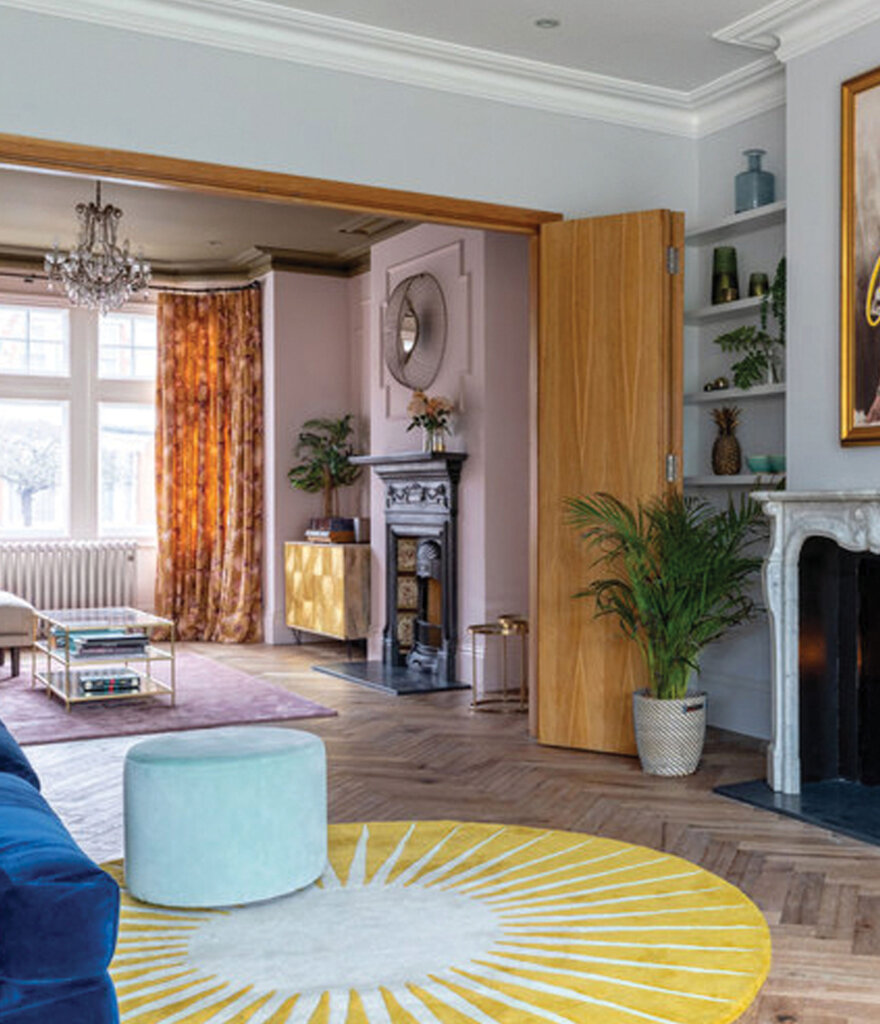
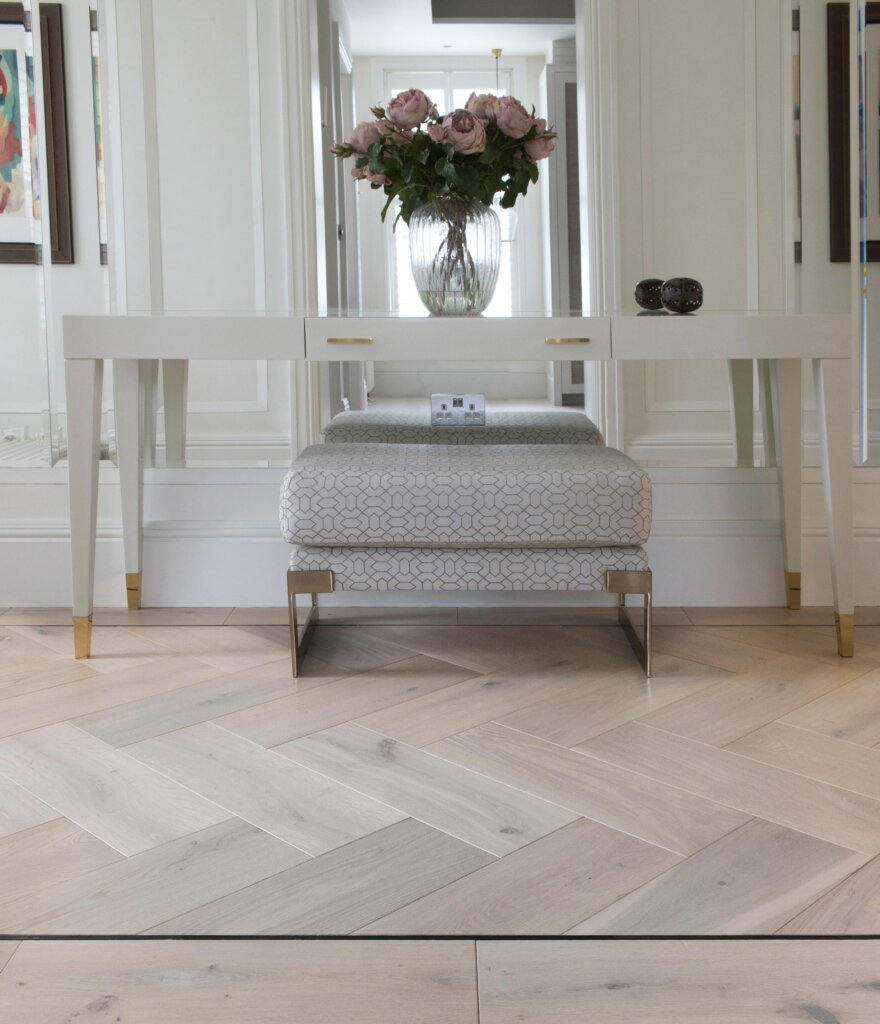
Natural Materials & Eco-Friendly Design
The use of natural materials has been increasing ever since the Scandinavian style rocketed in popularity in the 2010s. Using wood, marble, linen and rattan are all brilliant ways to introduce this trend to your home while maintaining a more current aesthetic.
Wood flooring is the epitome of this trend. Not only is it a renewable resource that is good for the environment, but it ages beautifully, developing a wonderful patina over time.
Flooring underpins your entire interior scheme, so you’ll want to choose something that you won’t have to replace after 5 years.
This concept ties into another huge trend: eco-friendly design.
Conscious consumption is at the top of the agenda as people are re-evaluating their impact on the planet. For many, this means not just using sustainably sourced products, but ones that last for longer without going to landfill. Wood flooring is a timeless choice – they never go out of fashion. This makes wood flooring the perfect choice when you are being mindful about what you choose for your home.
Reclaimed timber is the ultimate eco-friendly choice. Using reclaimed flooring or cladding in your home is the most sustainable and natural material you could possibly choose. Reclaimed wood can also be used to create furniture such as shelving, or even table tops. Open shelving can be used to break up spaces into zones, as we mentioned above – just make sure they’re very well bolted down!
Browse our reclaimed floors here.
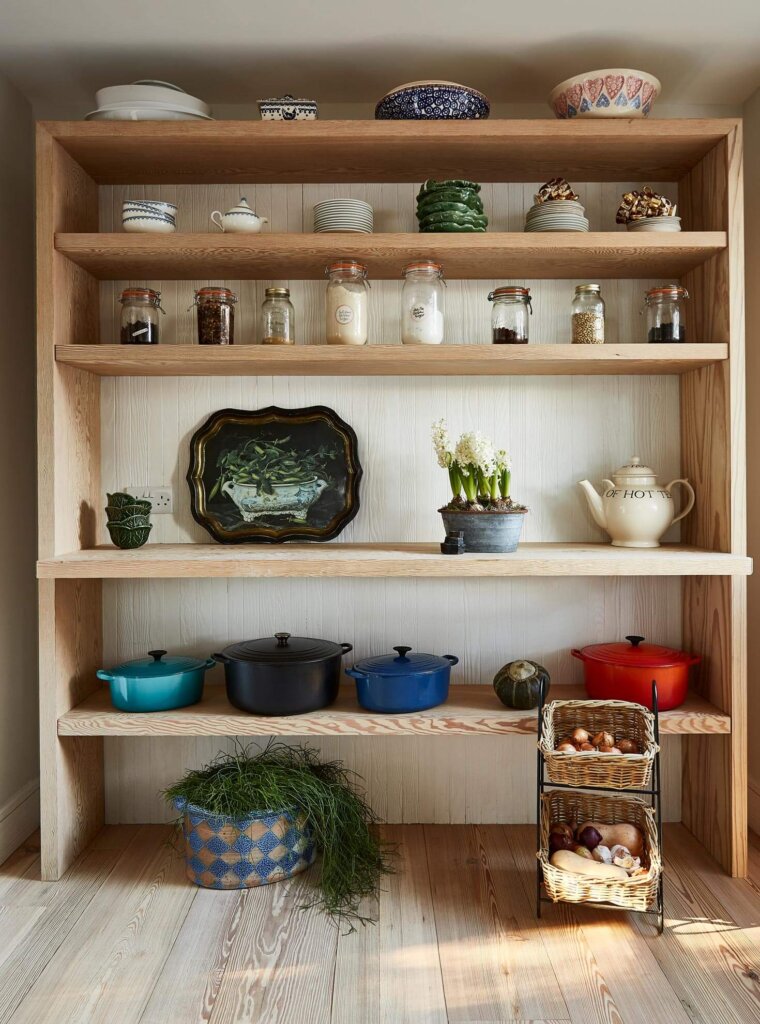
Textured Design
Textured design is the latest phase of the evolution that surfaces have been undergoing over the last few years. Tiles have become tactile, wallpapers have become three dimensional, and now it’s the time for furniture to take its turn.
Wood flooring is arguably the largest piece of furniture in your home, and is a great way to introduce texture.
Even a smooth wood floor can add texture to a space, but if you want to turn it up a notch you can choose from subtly textured options all the way through to rougher, sawn textures.
Brushed
The most delicate texture after smoothed, this is where the planks or blocks are brushed to remove the soft summer growth. This clever technique reveals the timber’s natural grain.
Undulating
We sand the wood’s natural undulations to really bring them to the fore. This gives a truly organic feel, as no board will be exactly the same as another.
Skip sawn
Inspired by the natural wear and tear of older wood, we make both shallow and deep saw marks across open areas of the board.
Shadow sawn
We use innovative techniques to create saw marks at random across the width of the board. This gives a lived-in look to the floor.
Coastal weathered
This technique replicates a weather-beaten texture. We sand blast the floors to give them an authentic, reclaimed texture and appearance.
View our Crafted Textures flooring here.
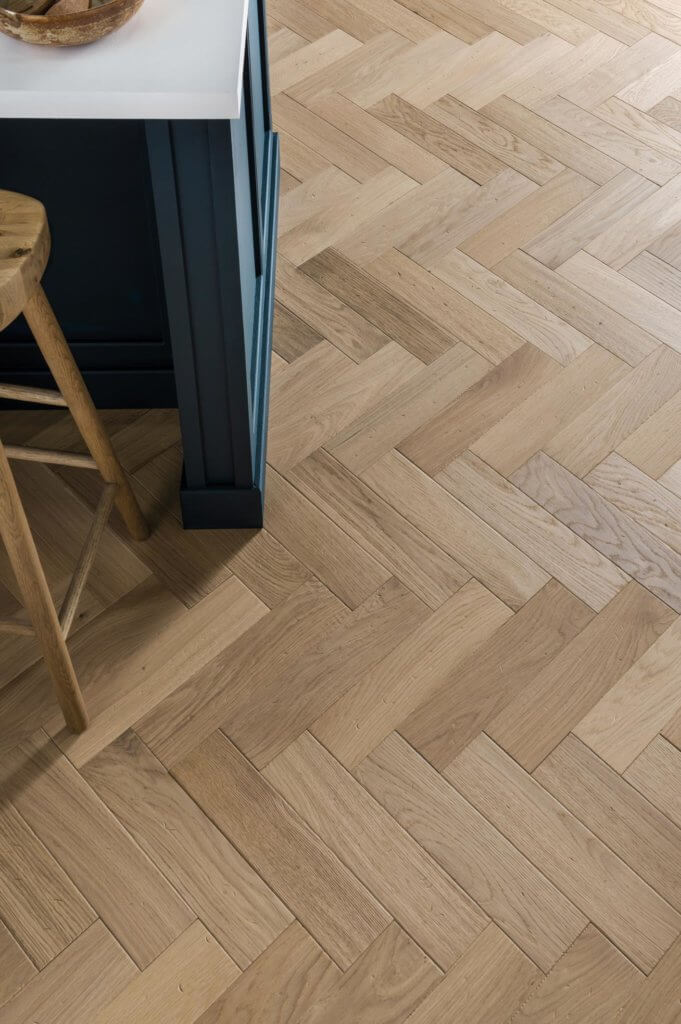
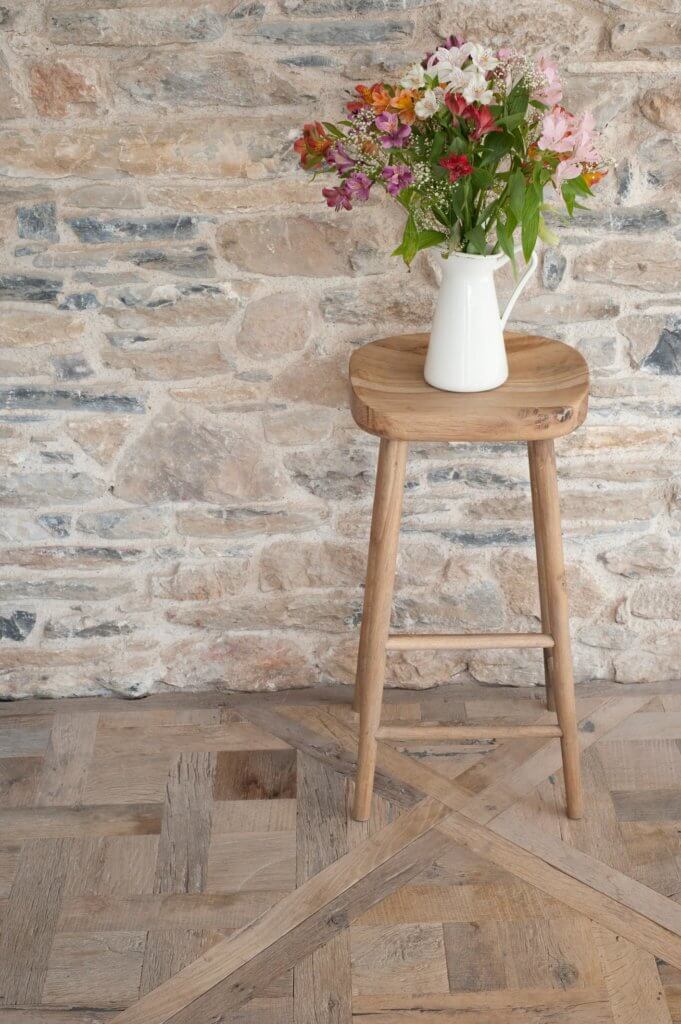
Summary
These trends all tie in beautifully together. Using textured, natural materials across a broken plan home can really make your home feel like a relaxing sanctuary. It brings a feeling of being closer to nature, while giving those you live with their own space.